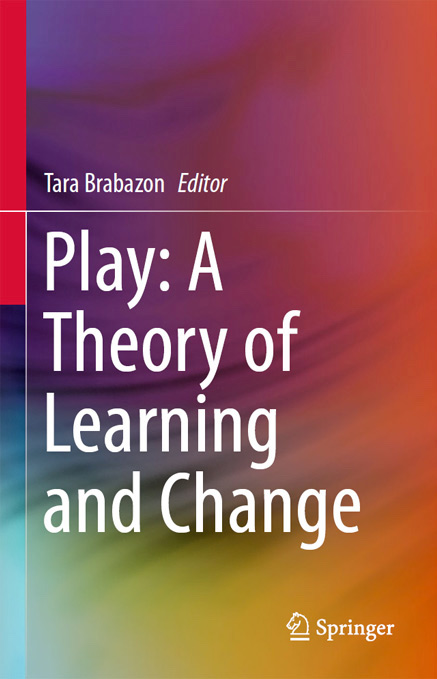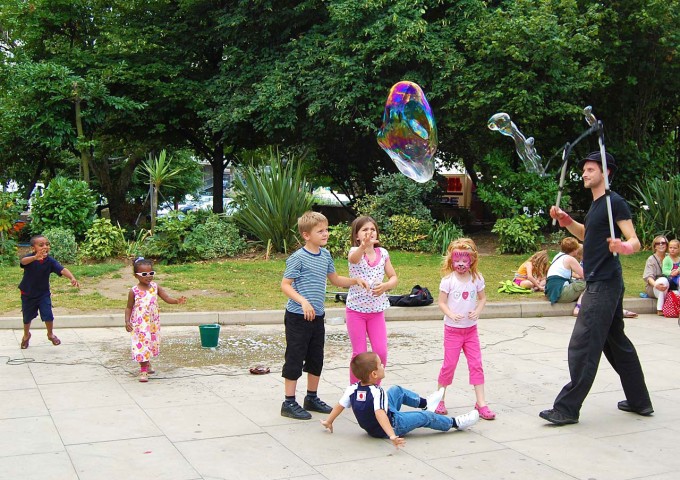When was the last time you stopped to think seriously about play? Chances are, it wasn’t when you were engaging in sport, or tackling a hobby with friends. We usually simply enjoy playing, and rarely give it much deeper thought. Yet, play is multifaceted, not to mention essential to our development as well-rounded human beings.
This is why Tara Brabazon’s new book Play: A Theory of Learning and Change is such a stimulating and important volume. It challenges us to think more critically about something vital that we increasingly seem to brush aside in our busy lives.
 The book is an edited collection that brings together 14 chapters, by 24 authors, covering a wide range of issues relating to play. Its central focus, though, is education. All of the chapters are united by the goal of understanding how play can enhance teaching and learning, and how individuals and societies can grow through play. This is explored through the different educational phases of life, with the book moving from early childhood development right through to university learning. It also considers the impact of technology, comparing older forms of play with newer ones (such as podcasting).
The book is an edited collection that brings together 14 chapters, by 24 authors, covering a wide range of issues relating to play. Its central focus, though, is education. All of the chapters are united by the goal of understanding how play can enhance teaching and learning, and how individuals and societies can grow through play. This is explored through the different educational phases of life, with the book moving from early childhood development right through to university learning. It also considers the impact of technology, comparing older forms of play with newer ones (such as podcasting).
The volume doesn’t offer just “a theory of learning and change” (as its title suggests). It offers many theories. Indeed, it’s a rich collection of different approaches to understanding play, especially in relation to education. It features broad approaches. One of these is Sandie Wong and Helen Logan’s historical chapter, which compares widespread play in previous eras with today’s increasingly limited and organised leisure activities. It also features more specific approaches. Kelly Tribolet, for example, looks at outdoor play; she concludes that although children are often busy outdoors, they are (worryingly) not necessarily physically active.
Examples from around the world bring the book’s concepts to life. For instance, Randa Khattar and Karyn Callaghan provide a delightful description of one little Canadian boy’s exploratory actions in a parent-child drop-in centre in Ontario. Sue Grieshaber shares moving memories of her experiences as a beginning primary school teacher in a small country town in Queensland, and the racism that she encountered when white children refused to play with Aboriginal children.
Although the diversity of topics and examples is eye-opening, the mixture of writing styles might bother some readers. The chapters move between the first person and the third, between formal and informal, and technical and non-technical. The collection also plays with its own topic; some chapters look at play directly, while others examine it obliquely, or use it as a springboard to tackle other topics.
These minor issues aside, the book provides an array of fascinating insights into play. Anyone interested in this multidimensional concept will find them interesting and valuable, and educators at all levels especially so.
If there is one overriding message conveyed by the book – if there is, indeed, one broad theory of play – it’s this: play is complex and very purposeful. It gives us rich opportunities to grow on many levels. It helps us navigate diversity, develop critical thinking skills, become more confident, and learn how to care for ourselves and others, among many other things.
As Brabazon says, play creates “opportunities for disruption”. By offering “a framework for the activation of risk, confusion, problem solving, failure and recalibration”, it helps us learn how to become better versions of ourselves. This applies to everyone, everywhere, at every stage in their lives.
Tara Brabazon, Play: A Theory of Learning and Change, Springer, 2016



